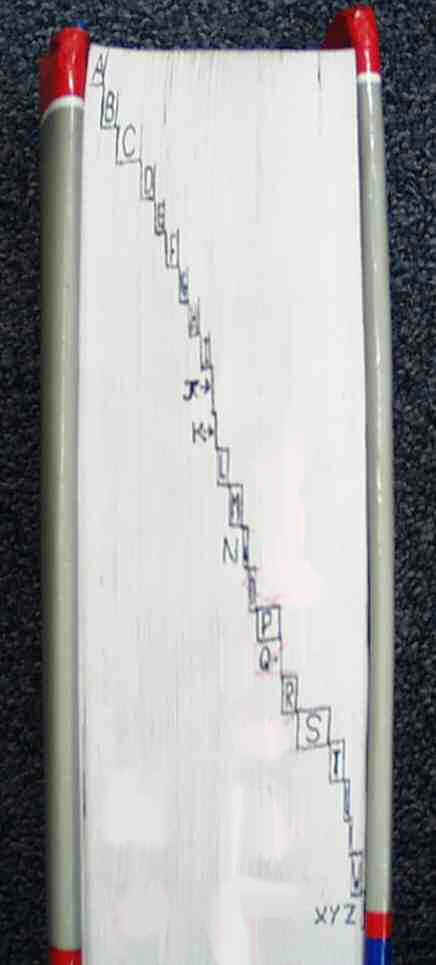Here are three ways to find words faster. Please
choose an option:
If you have any suggestions or questions, please fill in
a feedback form or e-mail the Webmaster.
 Modifying
your Dictionary
Modifying
your Dictionary
- You can shut your dictionary and write the first letter of the words on the sides of the
pages. Then you will be able to open the dictionary to the right letter. See the picture
on the right >
Headwords
- A headword is a word that you can look up in your dictionary. It is the first word in an
entry. An entry includes a headword, pronunciation information, grammatical information, a
definition and usually an example. Here is an example for the headword 'extreme':
Extreme (adj ). /ikstri:m/ Very great in degree or intensity. For
example 'He died in extreme pain'.
- Sometimes headwords are called 'roots', because they are the 'base' word with a certain
meaning, which other forms of the word come from. For example, words coming from 'Enthuse'
include 'enthusiasm'(N)', 'enthusiast' (N), enthusiastic (Adj). 'Jump' is
the headword or root of 'jumped', 'jumping', 'jumper', 'jumpy' etc. These derivative words
will not all be found in your dictionary. It is assumed that you know the regular forms of
verbs for example, so regular past tenses such as 'jumped' are often defined with 'jump',
or not in the dictionary at all.
- Therefore, if a verb form such as a past participle is not listed, take off the '_d' or
'_ed' at the end. If the word is an adjective, take off the ending (such as '_y', '_ing'
or '_ed'), then look. For plural nouns, take off the '_s' or '_es'. For adverbs, take off
the '_ly'.
Alphabetical Order
This is the alphabetical order of English. Learn it and learn the number for each
letter and you will be able to find words faster. If you want to test your alphabet
skills, click here .
| 1 |
2 |
3 |
4 |
5 |
6 |
7 |
8 |
9 |
10 |
11 |
12 |
13 |
14 |
15 |
16 |
17 |
18 |
19 |
20 |
21 |
22 |
23 |
24 |
25 |
26 |
| A |
B |
C |
D |
E |
F |
G |
H |
I |
J |
K |
L |
M |
N |
O |
P |
Q |
R |
S |
T |
U |
V |
W |
X |
Y |
Z |
Click here for some cards you can cut out and fold over in the
middle to make cards with letters on the one side and numbers on the other. Here is an
example:
Fold here
Use the cards to test yourself like this:
- Put the cards in random order.
- Hold all the card in one hand.
- Look at the letter on the top card and try to say the number as fast as possible.
- If you get it right, put down the card.
- If you get it wrong, put the card in the middle of the other cards in your hand, so that
you will see it again soon.
- Continue steps 1 to 5 until there are no more cards in your hand and you have put down
all the cards.
Tip: If the word has a hyphen in the middle, ignore it when you are
searching in alphabetical order, so 2 words with a hyphen in the middle (e.g.
'prize-giving') are treated the same as one word (e.g. 'prizegiving'). Thus prize-giving
is after 'prize-fighter'.
Cards: